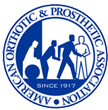"Where Experience Makes a Difference"
Monday, 30 November 2015 17:01
Walking Without Pain
“Excruciating pain. With every step, I felt excruciating pain that started in my heel and radiated throughout my entire right foot, ankle, and lower leg.”
That is how Jennifer Crossman described her past four years as she has struggled to deal with a fractured right talus bone that has failed to heal due to Avascular Necrosis (death of bone tissue as a result of lack of blood flow to a section of the bone). She has been seen by multiple orthopedic doctors and has tried various types of bracing in the past, to no avail. So, when she came into Northern Orthopedic Lab. in September, she was feeling less than optimistic that there was anything that could be done to relieve her pain.
Jennifer was evaluated by Donald W. Holmes, CPO, who used his nearly 50 years of experience to design a brace that he felt had the best opportunity to allow Jenn to be able to ambulate pain free.
“We designed a custom molded PTB (patella tendon bearing) AFO (ankle foot orthosis) which unloads the foot/ankle by transferring weight circumferentially along the medial tibial flare and condyle, similar to a prosthetic design that offloads the end of a residuum”, Mr. Holmes said. “We felt that if we could unload the stresses that are constantly placed on the foot/ankle when weight bearing and ambulating, then we could be successful in reducing her foot and ankle pain”.
After explaining the orthosis design and concept to her, Jennifer was 100% committed. She was willing to do whatever it took to be able to walk pain free again.
The process to receive a custom brace involves taking a negative impression of the leg (a cast which is then filled with plaster to create a mold of the leg), vacuum forming the polypropylene plastic core over the model, and then an extensive fabrication process of the brace in which padding, stainless steel ankle joints, and the PTB design is created. Unlike many facilities who use central fabrication sites to fabricate these complex types of braces, this entire process is done in house at Northern Orthopedic Lab. by our certified practioners and technicians. Prosthetic limbs are also fabricated on site.
“When we evaluate and cast our patients we are using our hands to feel the bony prominences and landmarks on the patient’s leg” states Mr. Holmes. “This is crucial in the fabrication process because we know where the potential problem areas are and we can provide reliefs for them in order to prevent pressure areas from developing. This is something that is very difficult to do when you choose to central fabricate a device.”
Jenn was back at NOL less than one week after she was casted for her PTB AAFO. She donned the orthosis and stood. Then, all at once, the tears came. Tears not of pain, but of joy and relief. The orthosis fit very well and functioned as designed to unload Jennifer’s foot and ankle as she stood and walked.
“I was feeling hopeless, “ Jenn said. “The week before I received my brace I had to call into work everyday because I was at the point where I couldn’t tolerate the pain any more. I’ve been dealing with this for four years, so after I put the brace on and was able to walk with virtually no pain, I couldn’t help but cry.”
Since being fit with the PTB AFO on October 15, Jennifer has returned back to her job at Indian River Intermediate School, where she works full time as a school nurse. She also states that since receiving the brace she has been able to increase her activity level, play with her children, and complete her all of normal activities with 95% pain relief of her ankle and foot.




